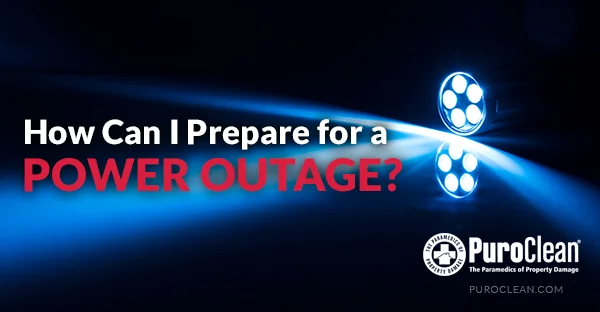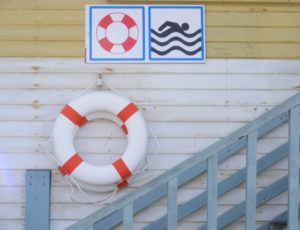
Brief electrical blackouts are typically not an issue, and with spring storms on the horizon, North Texas homeowners may start to experience them. But occasionally a severe storm or other disaster causes the power outage to last for an extended period of time. These are of greater concern, especially when it comes to determining the safety of food and water once the power has been turned back on. The best way to handle a power outage is to know what to expect and plan ahead. Here’s what you need to know!
Got Power?
From utilities to appliances and everything in between, the vast majority of what we use on a daily basis requires electricity to run. When the power goes out for an extended period of time, it can impact entire communities. They can disrupt general communications and transportation, close grocery stores, retail businesses, banks, and other day-to-day services, and can cause food to go bad and water to become contaminated and unsafe. Power outages are, unfortunately, a way of life, especially in storm seasons. But know what to do before they occur can make the situation easier to handle.
Before the Power Outage
To be prepared ahead of time, it’s important to follow the recommendation of the Centers for Disease Control and Prevention (CDC) and have a disaster supply kit ready. This kit should contain enough of the following supplies to last at least three days:
- Canned and dried non-perishable food
- Water
- Flashlights
- Extra batteries
- Prescription medicines
- First-aid supplies
- A digital thermometer
- Food, water, and medications for your pets
In addition to a disaster supply kit, there are several other things you can do ahead of time to ensure things run as smoothly as possible if your power goes out.
- Take inventory of any items you need that require electricity. Medical devices and refrigerated medications should have an alternate use and storage plan.
- Keep your gas tanks full and mobile phones and other electric equipment charged.
- Sign up for local warning systems and alerts so you can stay informed about your community’s response plans.
- If you know a storm is on its way, monitor weather reports often.
- Make sure your refrigerator and freezer both have a thermometer installed so you know their temperatures once the power is restored.
- Install carbon monoxide detectors in central locations throughout your home. If you have a 2-story home, be sure to install them on both levels. Ensure each detector is equipped with battery backup so it will continue working if the power goes out.
During the Power Outage
- Do NOT use gas lanterns, candles, or torches as light sources during a power outage. They are fire hazards and are more likely to cause damage to your home than battery-powered lights.
- To prevent carbon monoxide poisoning, be sure to only use grills, generators, and similar items outdoors and away from windows.
- Boiled, bottled, or treated water is safe for drinking, cooking, and personal hygiene. Do not use contaminated water to wash or prepare food, wash your hands or dishes, brush your teeth, make ice, or prepare baby formula or food.
- If you use bottled water, be sure it came from a safe source. If you do not know that the source was safe, boil or treat it before you use it. Boiling water, when possible, is the preferred way to kill harmful parasites and bacteria. Bringing the water to a rolling boil for one minute will kill most harmful organisms.
- While the power is out, keep the refrigerator and freezer doors closed as much as possible in order to keep food cold for a longer period of time.
- Pack milk and other dairy products, fish, meat, poultry, eggs, and spoilable leftovers into an inexpensive styrofoam cooler surrounded by ice in order to help extend their life.
- If the weather is hot, stay as cool as possible and drink lots of fluids to prevent a heat-related illness.
- Disconnect appliances and electronics from their outlets to help avoid damage from electrical surges once the power is turned back on.
After the Power Outage
- Listen to the television or radio to hear if local authorities report that your water is safe.
- If the power outage has lasted for less than four hours, the food in your refrigerator and freezer should be safe to consume.
- A half-full freezer will hold food safely for up to 24 hours. A full freezer will hold food safely for 48 hours, especially if you avoid opening the freezer door.
- If some of the food in the freezer started to thaw but the thermometer in the freezer reads 40 degrees Fahrenheit and the food still contains ice crystals, the food is safe and may be refrozen. The partial thawing and refreezing might reduce food quality, but the food should remain safe to eat.
- Use a food thermometer to check a food’s temperature right before you cook or eat it. Throw away any food that has a temperature of more than 40 degrees Fahrenheit.
If a natural disaster or other emergency situation leads to water or fire damage in your home, be sure to seek help from a professional immediately. PuroClean Restoration Specialists have the experience, expertise, and tools to restore your home to its pre-disaster condition.



 PuroClean Restoration Specialists
PuroClean Restoration Specialists